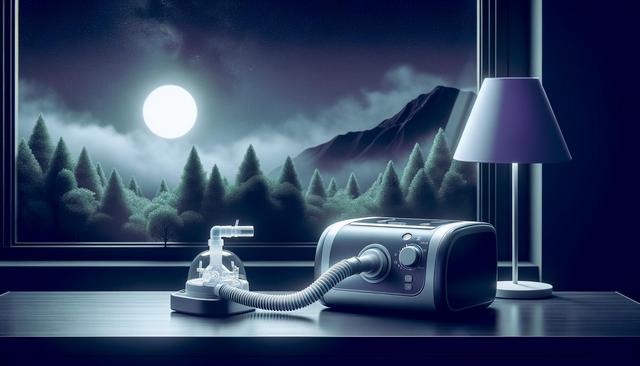A Guide to Discover More About Sleep Apnea Treatment Options
Uncover practical insights into effective sleep apnea treatment options, from CPAP machines to lifestyle changes. This guide helps you make informed choices for better rest, improved breathing, and overall wellness through medically supported and convenient at-home treatment strategies.

Understanding Sleep Apnea and Its Impact
Sleep apnea is a common yet often underdiagnosed condition that causes breathing interruptions during sleep. These pauses can last from a few seconds to minutes and may occur several times an hour, severely impacting sleep quality and overall health. There are three main types of sleep apnea: obstructive, central, and complex. Obstructive sleep apnea (OSA) is the most prevalent and occurs when throat muscles relax excessively, blocking airflow. Central sleep apnea involves the brain failing to send proper signals to the muscles that control breathing. Complex sleep apnea is a combination of both. Recognizing the symptoms—such as loud snoring, morning headaches, fatigue, and irritability—is the first step toward finding the right treatment.
Left untreated, sleep apnea can lead to serious health complications, including high blood pressure, heart disease, type 2 diabetes, and stroke. The condition can also significantly affect daily productivity, cognitive function, and mood. Understanding the type and severity of sleep apnea through a proper diagnosis is essential for selecting the most appropriate treatment plan.
CPAP Therapy: A Widely Used Approach
Continuous Positive Airway Pressure (CPAP) therapy remains one of the most commonly prescribed treatments for moderate to severe obstructive sleep apnea. A CPAP machine delivers a steady stream of air through a mask worn during sleep, keeping the airway open and preventing interruptions in breathing. This method has been medically supported for its effectiveness in reducing apnea episodes and improving sleep quality.
CPAP therapy has evolved over the years to become more user-friendly and accessible. Modern machines are quieter, more compact, and often come with features like humidifiers and data tracking. Users can benefit from:
- Improved alertness and reduced daytime fatigue
- Lowered blood pressure
- Better cardiovascular health
- Enhanced overall sleep quality
While some users may find the mask uncomfortable initially, proper fitting and the wide range of available mask styles can greatly improve comfort. Regular follow-ups with a healthcare provider can help fine-tune the therapy for optimal results.
Alternative Medical Devices and Therapies
For those who find CPAP therapy challenging or unsuitable, there are alternative devices and treatments worth exploring. One such option is the use of oral appliances. These custom-made devices are worn in the mouth during sleep and work by repositioning the lower jaw or tongue to keep the airway open. Oral appliances are particularly effective for individuals with mild to moderate obstructive sleep apnea and may be more comfortable and portable than CPAP machines.
Another emerging treatment involves positional therapy, which encourages sleeping in positions that reduce the likelihood of airway obstruction. This approach is especially helpful for patients whose apnea is predominantly positional. Additionally, some cases may benefit from Expiratory Positive Airway Pressure (EPAP) devices, which are small, disposable devices placed over the nostrils to create resistance during exhalation, helping to maintain open airways.
In more severe or complex cases, surgical options may be considered. These can include procedures to remove or shrink tissue in the throat, reposition the jaw, or implant nerve stimulators that keep the airway muscles engaged during sleep. Deciding on surgical intervention requires thorough evaluation and consultation with a sleep specialist or ENT (ear, nose, and throat) surgeon.
Lifestyle Changes that Support Treatment
In addition to medical interventions, lifestyle changes play a significant role in managing sleep apnea symptoms and improving treatment effectiveness. These adjustments are often recommended alongside device-based therapies to enhance overall outcomes. Key lifestyle modifications include:
- Weight management: Losing excess weight can significantly reduce or eliminate obstructive sleep apnea symptoms.
- Exercise: Regular physical activity improves respiratory function and sleep quality.
- Avoiding alcohol and sedatives: These substances relax the throat muscles and can worsen apnea episodes.
- Establishing a consistent sleep routine: Going to bed and waking up at the same time daily helps regulate the sleep cycle.
- Sleeping on one’s side: This position can prevent the airway from collapsing compared to sleeping on the back.
These changes not only support the primary treatment but also contribute to better overall health. Integrating healthy habits into daily life can make a noticeable difference in sleep quality and daytime functioning.
Getting Diagnosed and Finding the Right Support
A proper diagnosis is the foundation for effective sleep apnea treatment. This typically involves a sleep study, which can be conducted in a clinical setting or through a home sleep test, depending on the severity of symptoms and physician recommendations. The results help determine the type and severity of sleep apnea, guiding the choice of treatment options.
Working with a sleep specialist ensures that the treatment plan is tailored to individual needs. These professionals can help monitor progress, adjust therapies as needed, and address any side effects or challenges. It’s also beneficial to join support groups or online communities where individuals share experiences and tips for coping with sleep apnea.
Accessing high-quality information and reliable resources is essential for managing this condition effectively. Many healthcare providers offer educational materials, and reputable health websites provide up-to-date guidance on available treatments and self-care strategies. Staying informed empowers patients to take an active role in their treatment and well-being.
Conclusion: Taking Action for Better Sleep and Health
Sleep apnea is a manageable condition with the right combination of medical treatment, lifestyle changes, and ongoing support. From CPAP therapy to oral appliances and practical daily habits, there are multiple paths to improved breathing and restful sleep. Understanding the available options and consulting with healthcare professionals can lead to a personalized and effective treatment plan. Taking proactive steps not only enhances sleep quality but can also significantly improve overall health and quality of life.